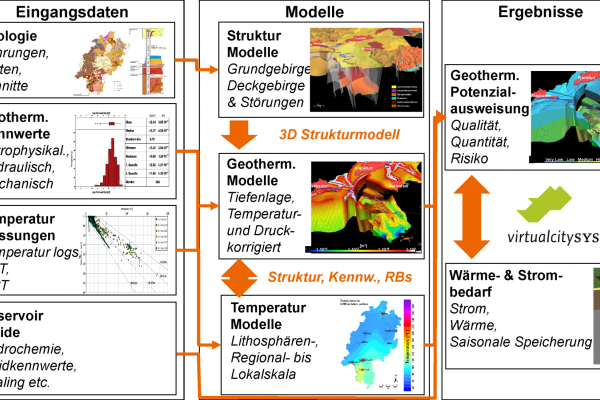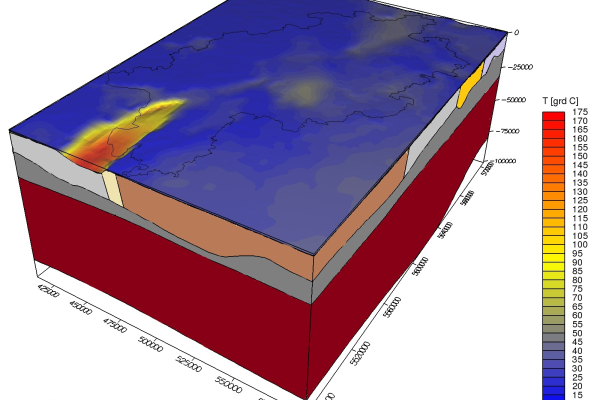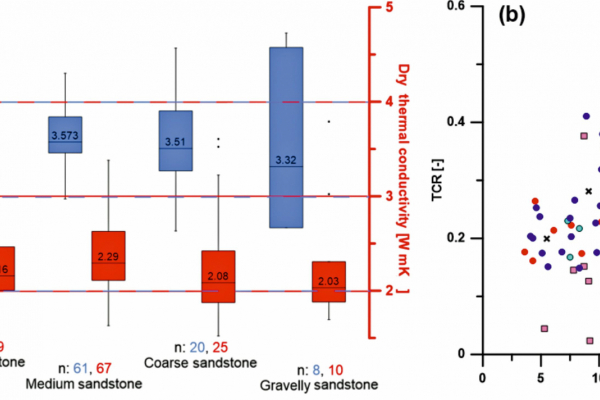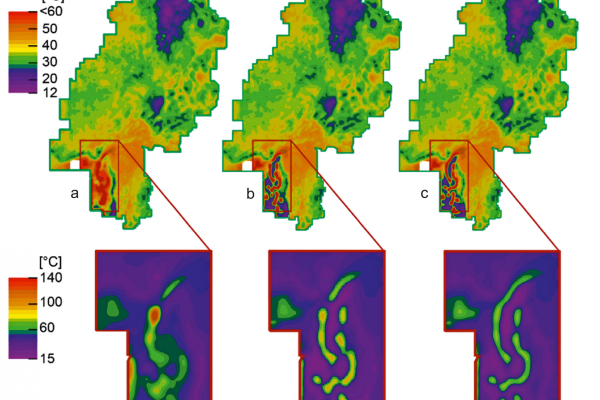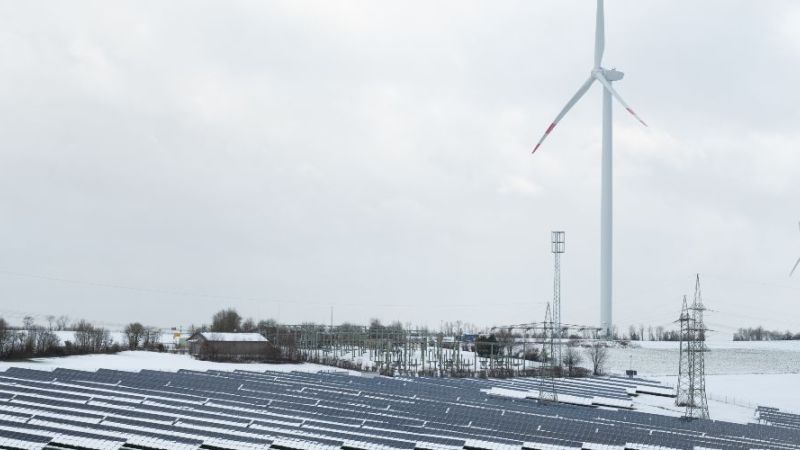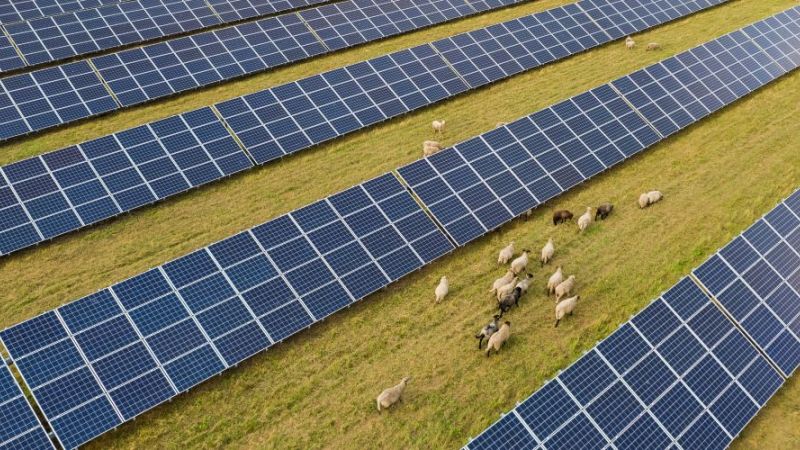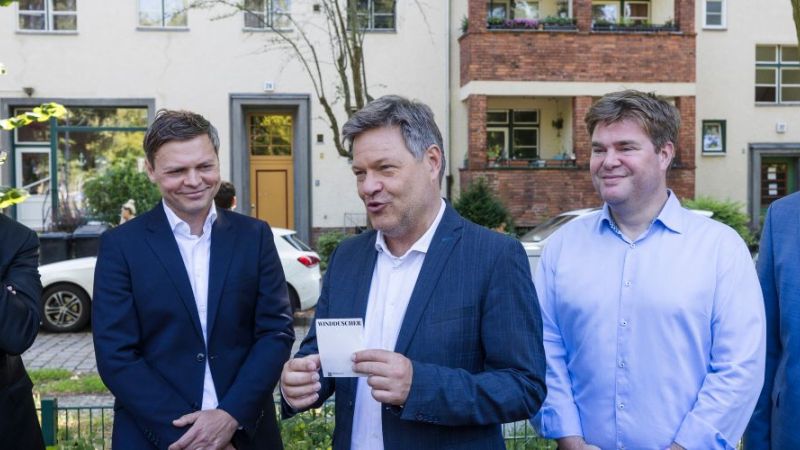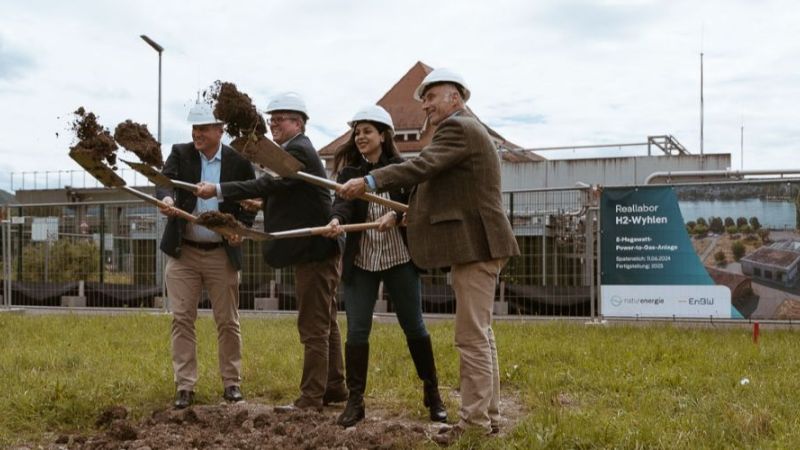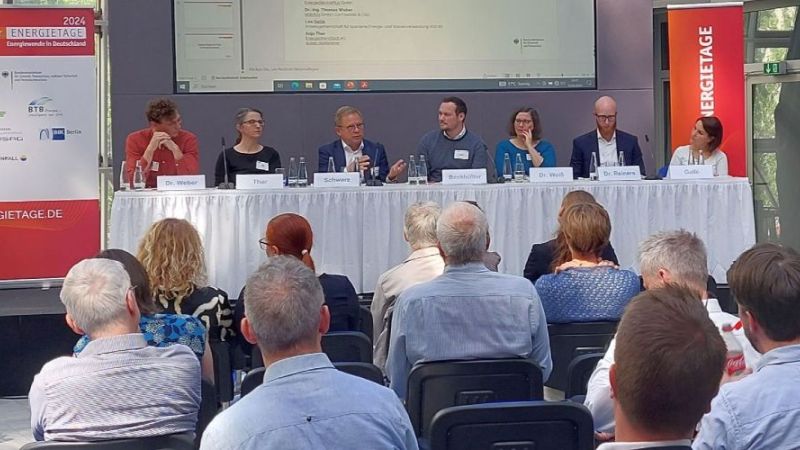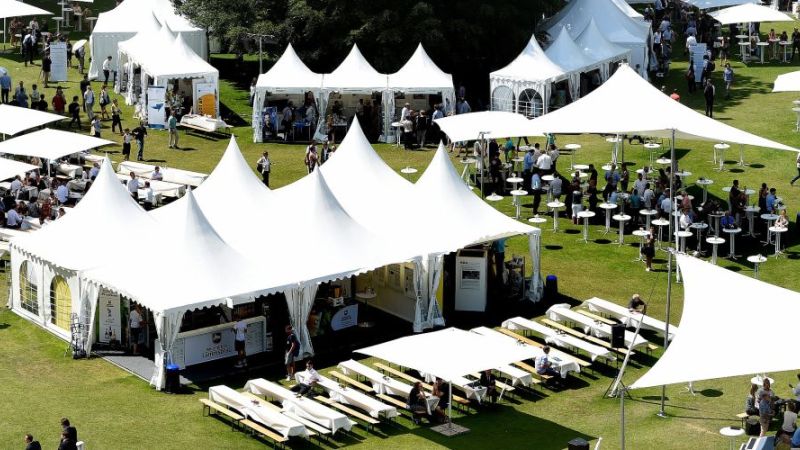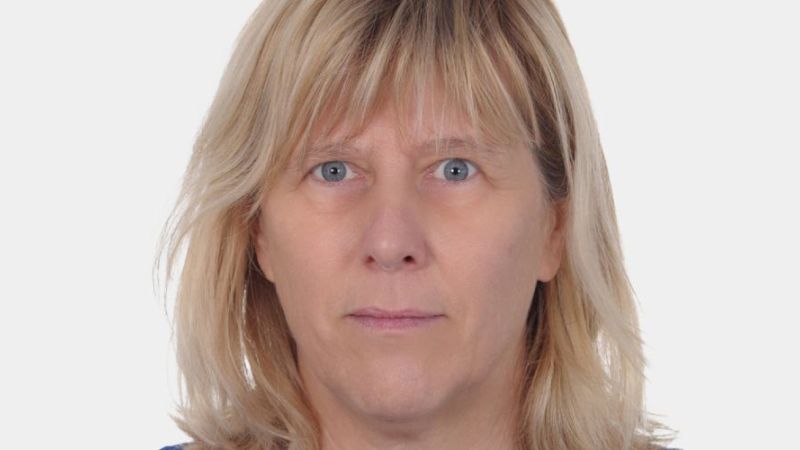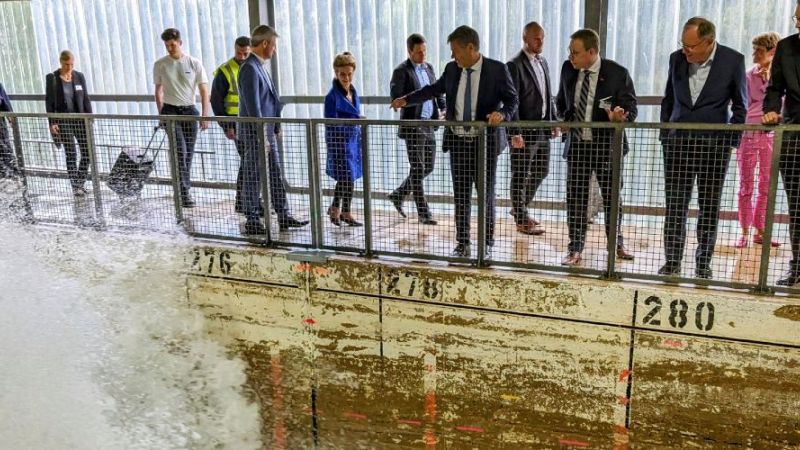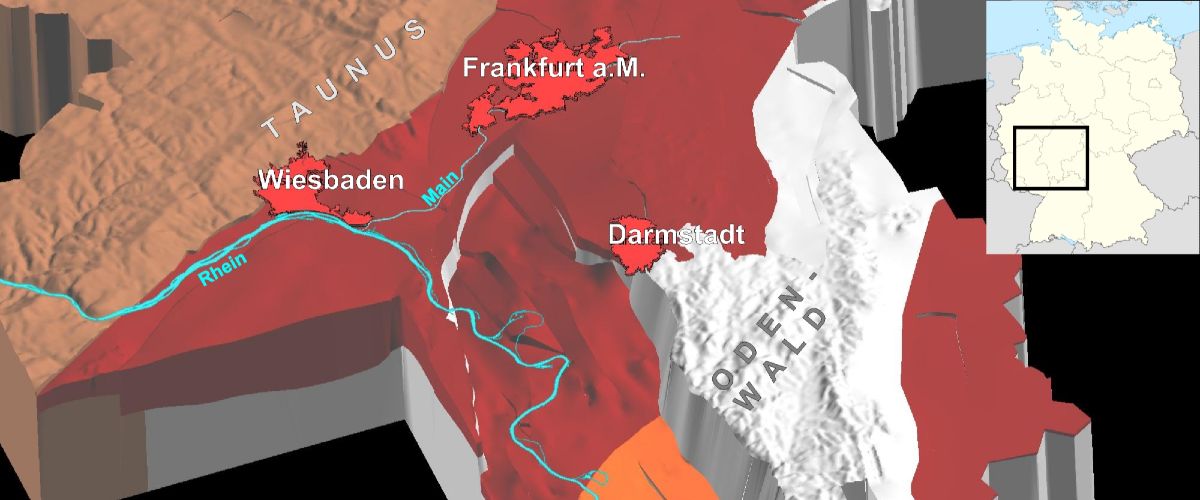 © Kristian Bär
© Kristian Bär
Geothermal energy
Heat from the substratum for Hesse
As an environmentally friendly source of energy, heat from the deep and medium-deep substratum is an essential pillar of the heating transition and is already being used as an energy source by many actors. The only data available to date for the Federal State of Hesse are the hydrothermal potentials. However, there is a lack of comprehensive data on the petrothermal or medium-deep potential for electricity generation, heat utilisation and storage for future geothermally supplied projects. The joint project Hessen 3D II is intended to close this knowledge gap. To this end, the TU Darmstadt together with the GeoForschungsZentrum Potsdam is improving geological-geothermal models with the aim of covering the entire federal state as far as possible.
Project context
In Germany, approximately 95 per cent of the potential for geothermal electricity generation is accounted for by the crystalline bedrock. However, electricity has so far been generated exclusively from hydrothermal reservoirs. On the one hand, the technical exploitation of the petrothermal potential has not yet reached market maturity; on the other hand, the knowledge of the structure and properties of the crystalline bedrock is still incomplete.
For Germany, experts now believe that petrothermal systems offer the greatest opportunities for the expansion of geothermal electricity provision. Hot rock is present everywhere in the substratum. In addition to wind power, hydroelectric power, biomass as well as thermal solar energy and photovoltaics, geothermal energy is one of the great hopes for the future energy provision, as it is capable of providing base load. The potential for thermal storage in petrothermal systems, such as the combination of solar thermal energy and geothermal energy, is considerable. Apart from electricity generation, one of the main arguments in favour of deep geothermal energy is the heat supply.
Research focus
An important goal is to estimate and improve the exploration risk for geothermal wells in Hesse, based on the results of the Hesse 3D project, and to enable the exploration risk to be insured. In contrast to the hydrothermal potentials, no comprehensive data on petrothermal or medium-depth geothermal potentials are available for Hesse as yet. For this reason, the research teams of the TU Darmstadt and GFZ Potsdam started the joint project Hesse 3D II in early 2016.
The project teams intend to extend databases on petrophysical rock, thermal fluid and reservoir properties and to create improved geothermal subterranean models. Particular emphasis is placed on forecasts of the petrothermal potential for geothermal electricity generation and heat production and the potential for seasonal heat storage.
The influences of the varying rock properties in the substratum and the competing heat transport mechanisms on the temperature distribution are also of interest and are to be analysed. The project teams create temperature models for the whole of Hesse.
They intend to integrate these thermal models into the already created 3D subterranean models and to supplement them with measurements of petrophysical characteristic values. Lastly, the teams are planning to calculate the geothermal potential distribution for the whole of Hesse and to make this available, using the existing virtual 3D city model of Frankfurt am Main as an example that can also be accessed locally. This allows the findings to be used directly for planning geothermal wells.
Innovation
Drilling costs account for a significant proportion of the total costs of a geothermal project. If these can be reduced, geothermal electricity generation and heat production can become significantly more economical. Improved knowledge of the substratum enables targeted drilling.
The individual petrographic units of the bedrock as well as geothermally usable reservoir horizons in the overlying rock are to be modelled in detail and geothermally parameterised. This enables numerical heat transport simulations. This approach offers a significantly improved quality of the substratum temperature forecast compared to the forerunner project Hessen 3D.
The resulting potential forecasts for hydrothermal and petrothermal electricity generation plants as well as for open and closed systems for direct heat generation or storage will take into account technical and economic constraints. Knowledge of the statistical characteristic values of the rock, thermal fluid and reservoir properties allows the probability of occurrence of the forecasts to be quantified and used directly for the mathematical specification of the exploration risk in relation to the reservoir and type of use. Such a stochastic assessment offers the prospect of re-establishing an insurance of the exploration risk for future projects.
Results
By compiling and re-interpreting gravimetric data and using them for gravimetric forward modelling, the scientists were able to significantly improve the forecast models for the propagation of different rock types of the Variscan bedrock in Hesse. The refined 3D models are locally much more detailed than all previously available models. This provides an ideal basis for the conclusive assessment of Hesse's petrothermal potential.
In order to identify the medium-depth potentials for heat utilisation and storage, the project teams determined and evaluated the relevant petrophysical (density, porosity, permeability) and geothermal characteristic values (thermal conductivity, thermal diffusivity, thermal capacity) of all potential reservoir units from more than 200 rock samples from old exploration wells of the hydrocarbon industry in the northern Upper Rhine Graben as well as from more than 250 rock samples of the Buntsandstein in north-eastern Hesse.
In a further sub-project involving temperature modelling and potential forecasts, the scientists applied numerical models of subsurface temperature distribution. These cover both conductive and convective as well as the coupling of both heat transport processes. These models have contributed significantly to a better understanding of the relevant heat transport processes in the substratum of Hesse. A much more accurate temperature forecast is ultimately to be achieved by means of additional models based on the significantly refined 3D models and rock parameters from the investigations described above.
In close collaboration with the associated cooperation partner, the Hessian Agency for Nature Conservation, Environment and Geology (HLNUG), and a newly created cooperation with the Federal Institute for Geosciences and Natural Resources (BGR), the project partners compiled more than 1000 data sets on the hydrochemistry of potential reservoir fluids in Hessen and recorded them in a standardised database structure. This forms the basis for the assessment of the hydrochemistry, which must always be taken into account during the geothermal development and planning of the systems technology in order to avoid scaling or corrosion during operation.
Practical transfer
It is planned to link the results with the existing 3D city model of the city of Frankfurt am Main and the heat requirement documented there. For the first time, construction engineers, local or regional energy supply companies, approval authorities, scientists and the interested public will then have the opportunity to interactively retrieve energy-relevant subsurface information for Hesse's largest city. This digital coupling of the underground potential with the above-ground infrastructure can facilitate decision-making. The results will furthermore be integrated into the Geothermal Information System of Germany (GeotIS).

